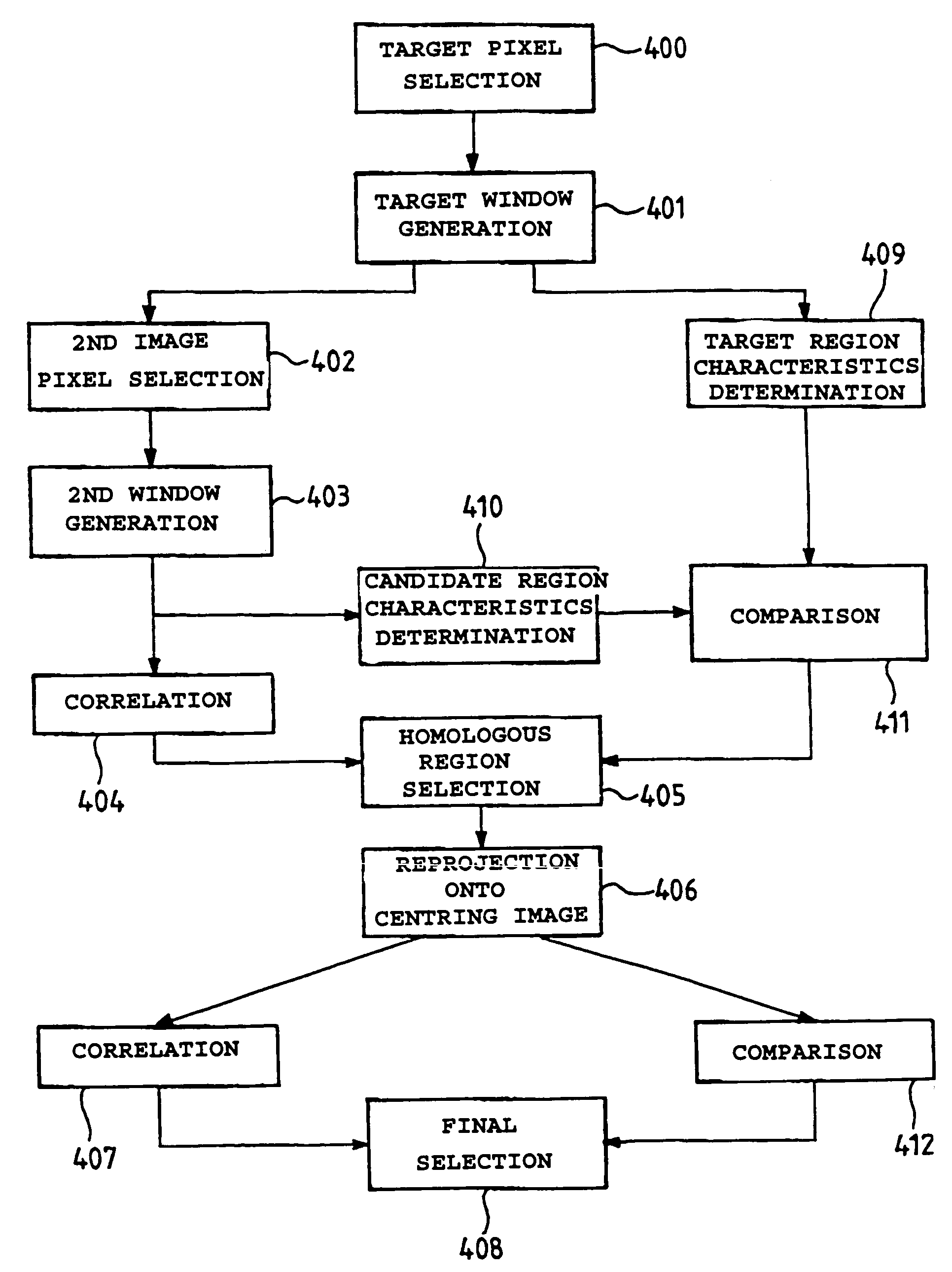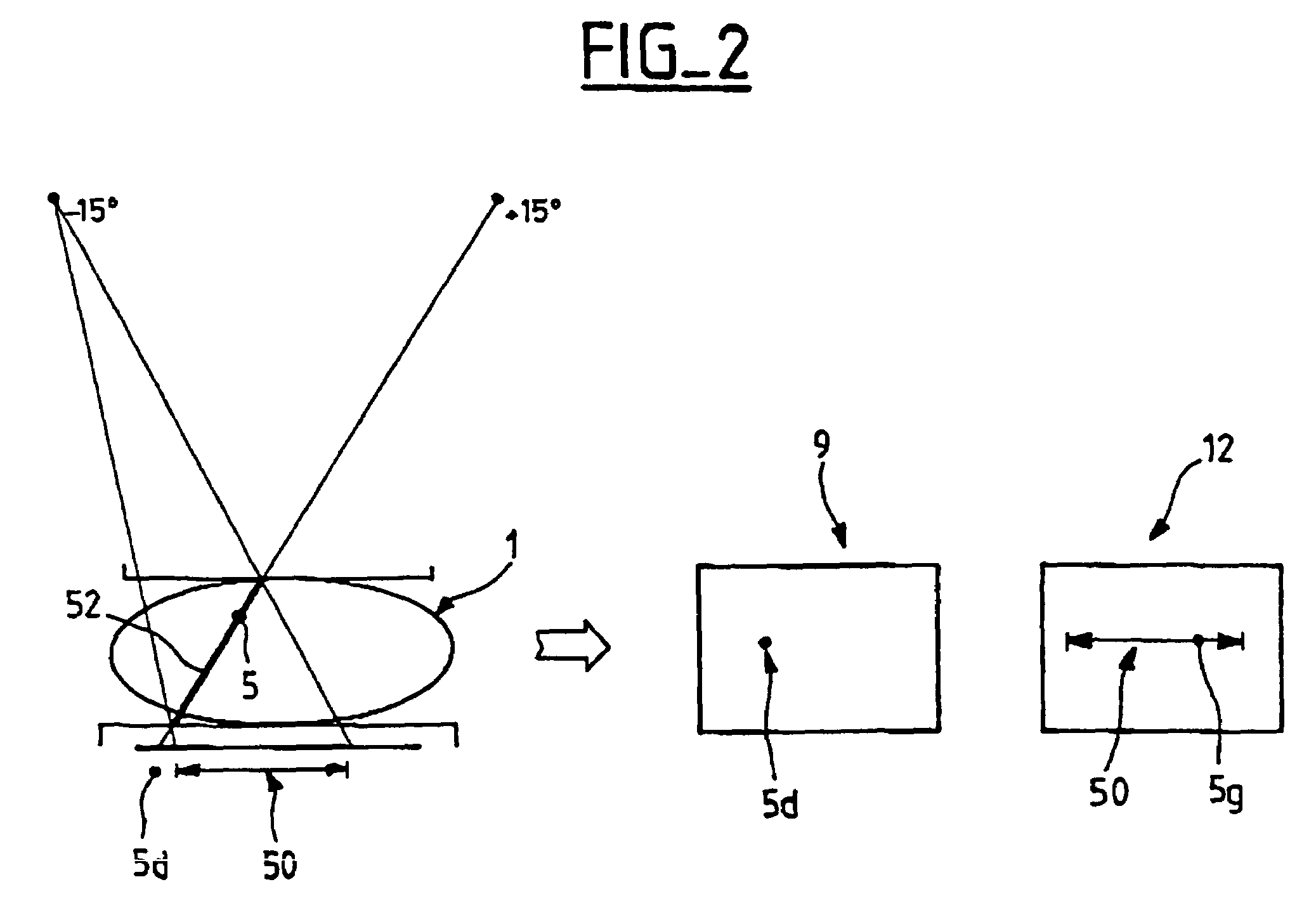Method for locating an element of interest contained in a three-dimensional object, in particular during a stereotactic investigation in the X-ray examination of the breast
a three-dimensional object and element technology, applied in the field of methods, can solve the problems of difficult matching of projected microcalcifications, time-consuming and sometimes inaccurate steps, and difficult operations for positioning elements on various images
- Summary
- Abstract
- Description
- Claims
- Application Information
AI Technical Summary
Benefits of technology
Problems solved by technology
Method used
Image
Examples
Embodiment Construction
[0045]A stereotaxic examination, in particular in mammography, is composed of a series of three exposures of a three-dimensional object 1 (FIG. 1), for example a breast, resting on a support 3 and compressed by a compression plate 2, with the aid of an X-ray tube which respectively occupies three different positions 6, 7, and 8. In practice, one exposure is taken at an angle of 0° and two exposures are taken angulated at two equal and opposite angles, in practice ±15°.
[0046]A CCD receiver 4 thus makes it possible to obtain three digitized stereotaxic images 10, 11 and 12. According to a convention which is normally used, the image 10 is the right image, while the image 12 is the left image and the image 11 is the centering image.
[0047]An element of interest 5, for example a microcalcification, contained in the three-dimensional object 1 provides regions of interests, respectively referenced 5d, 5c and 5g, on each of the images 10, 11 and 12. The centering image is used in particular...
PUM
 Login to View More
Login to View More Abstract
Description
Claims
Application Information
 Login to View More
Login to View More - R&D
- Intellectual Property
- Life Sciences
- Materials
- Tech Scout
- Unparalleled Data Quality
- Higher Quality Content
- 60% Fewer Hallucinations
Browse by: Latest US Patents, China's latest patents, Technical Efficacy Thesaurus, Application Domain, Technology Topic, Popular Technical Reports.
© 2025 PatSnap. All rights reserved.Legal|Privacy policy|Modern Slavery Act Transparency Statement|Sitemap|About US| Contact US: help@patsnap.com



